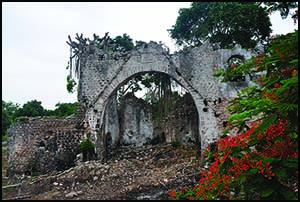Article contents
Perceptions of the past within Tz'utujil ontologies and Yucatec hybridities
Published online by Cambridge University Press: 06 April 2016
Abstract

Post-colonial tensions remain fresh among Indigenous communities in Mexico and Guatemala. The survival of local Maya heritage narratives in the face of conflicting belief systems, the increased commodification of antiquities and the decline of traditional ways of life is increasingly difficult. At Santiago Atitlán in the Guatemalan highlands, and at Tahcabo in the state of Yucatán, Mexico, individuals have sought to preserve traditional narratives through ontological constructs and by enacting hybridity. These studies demonstrate how collaborative archaeology and ethnoarchaeology highlight the perspectives of Indigenous communities and contribute towards greater multi-vocality.
Information
- Type
- Research
- Information
- Copyright
- Copyright © Antiquity Publications Ltd, 2016
References
- 7
- Cited by

